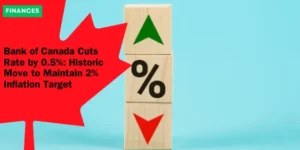Market Meltdown: S&P 500 Records Second-Worst Day of 2025 as Inflation and AI Concerns Collide
Anúncios
Market Overview: A Day of Sharp Declines
Friday was a turbulent day for the markets. The S&P 500 fell by 2%, marking its second-worst trading day of 2025.
The tech-heavy Nasdaq experienced even steeper declines, falling 2.7% and breaking its yearly low.
Anúncios
Both major indices have now posted their fifth weekly decline in six weeks, reflecting a period of significant instability in the markets.

Anúncios
Inflation Concerns Take Center Stage
Amid the turbulence in the markets, inflation concerns are casting a long shadow over investor confidence.
February’s inflation data came in hotter than the Federal Reserve had anticipated, unsettling the markets and sparking anxiety about future economic stability.
Rising Inflation and Consumer Confidence
The unexpected surge in the inflation rate in February has raised alarms.
The Federal Reserve now faces increased pressure to reconsider its monetary policies, a move that could potentially lead to higher interest rates.
This has left consumers jittery, as higher inflation directly impacts their purchasing power and future financial security.
Consumers have been vocal about their rising inflation expectations. According to a recent report from the University of Michigan, there is a growing sense of pessimism about the economy.
The combination of higher prices and uncertain economic policies is making consumers wary. As a result, consumer confidence has taken a hit, which could lead to decreased spending, further affecting the overall economy.
| Aspect | Impact |
|---|---|
| 📊 Tariff Strategy | Implementation of new tariffs under President Trump’s strategy creates unease among businesses and investors |
| 💻 Tech Sector | Fears that reciprocal tariffs could negatively affect major exporting sectors, particularly technology |
| 💼 Business Uncertainty | Businesses are challenged by the complexities of new trade policies, increasing uncertainty |
| 📉 Market Volatility | Market volatility is rising, making it harder for investors to make informed decisions due to tariff uncertainties |
The Dual Pressure and Investor Resilience
The dual pressure of rising inflation and trade tensions is testing the resilience of investors.
Despite these challenges, there has not been a significant migration to money markets.
Many investors are choosing to ride out the current volatility, suggesting an underlying faith in the market’s ability to adjust to these new economic realities.
Analysts are cautiously optimistic that the current market turmoil may be a temporary adjustment period. They point out that the economic fundamentals remain relatively strong, even if sentiment has been shaken.
This perspective provides a glimmer of hope that the markets may stabilize once the initial shock of these new policies subsides.
While the market grapples with these inflation and trade concerns, it continues to weigh the implications of other significant trends shaping the financial landscape.
AI Investment Skepticism Grows
Nvidia’s Plunge
When it rains, it pours. Nvidia’s shares have taken a significant hit, plunging 27% since their January peak—a staggering loss of approximately $1 trillion in market value.
The downturn reflects growing doubts about the return on hefty investments in artificial intelligence.
Nvidia is a leading company in the AI sector had previously rode waves of optimism to considerable heights. Now, though, reality seems to have set in: returns on these investments might not be as sunny as anticipated.
Microsoft Pulls Back
Adding to the air of caution, reports surfaced that Microsoft has put a halt to new data center projects in the U.S. and Europe.
This is a telling sign that even tech giants are reassessing their spending priorities amid current economic uncertainties.
While Microsoft has not directly confirmed these reports, their spokesperson did acknowledge a strategic pause, stating, “Thanks to the significant investments we have made up to this point, we are well positioned to meet our current and increasing customer demand.”
One can interpret this as a careful balancing act to manage existing resources rather than pouring capital into new projects—reflecting the need for a more measured approach.
CoreWeave’s Sobering IPO 📉
The cooling sentiment is further evidenced by the reception of CoreWeave’s IPO.
Originally, the pricing and share quantity were ambitious. However, these have had to be scaled back, indicating that investor appetite is waning.
When CoreWeave’s shares traded below the target range immediately upon opening, it painted a stark picture of a market tepid on further AI investments.
Investor and Market Sentiment 🧐
Given the current landscape, it’s evident that investor sentiment may be taking a more cautious stance, though not unanimously so.
Despite the sharp selloff and unsettling headlines, there hasn’t been a significant rush to money markets 💰.
This suggests many investors are still betting on long-term gains and hence, choosing to endure the present volatility rather than cashing out hastily 📈.
Indeed, analysts are suggesting that this period of turbulence could merely be an adjustment phase.
Paradoxically, despite these broader market pressures, some analysts, like Scott Helfstein from Global X, believe the news isn’t entirely bleak 🌤️.
For instance, he points out that inflation and consumer spending reports, while not great, are not catastrophic either.
This sentiment implies that the broader market anxieties could be more about short-term uncertainties than long-term despair.
Transitioning from these concerns on AI, the market must now attempt to balance the complexities of inflation pressures while re-evaluating its stance on the AI sector.
Market Pressures and Investor Response ⚖️
Dual Pressure: Tech Sector Tariffs and Weakening Consumer Spending
The market’s turbulence continued as the tech sector and consumer spending simultaneously faced significant pressure.
The tech industry, specifically, grappled with reciprocal tariffs affecting major exporting sectors 💻.
These tariffs introduced uncertainties about profit margins and further investments, making investors apprehensive about the sector’s future performance 📉.
At the same time, consumer spending exhibited signs of weakening. With inflation rates surpassing Federal Reserve expectations, consumers grew increasingly cautious about their financial outlooks .
Rising costs of goods and services dampened purchasing power, leading to decreased spending on non-essential items .
This shift in consumer behavior added another layer of complexity to the already volatile market.
Investor Resilience Amid Market Volatility 💪
Despite the ongoing market challenges, investors showed remarkable resilience. Rather than reacting with widespread panic, the exodus to money market funds remained minimal.
This suggests that many investors are choosing to ride out the current volatility, banking on a market stabilization in the near future 🌱.
Investors’ patience reflects a broader understanding of the cyclical nature of markets ⏳.
Historical trends indicate that periods of volatility are often followed by phases of recovery and growth .
By limiting their exodus to safer investments, these investors demonstrate confidence in the eventual rebalancing of market forces.
Analysts’ Perspective: A Temporary Adjustment?
Market analysts have weighed in on the current volatility, offering a cautiously optimistic outlook. Some experts suggest that the dual pressures on the tech sector and consumer spending may represent a temporary adjustment to new policies and economic conditions.
They argue that the market is simply recalibrating to the recent changes, including President Trump’s tariff strategies and the Federal Reserve’s response to inflation.
While the immediate future remains uncertain, analysts believe that once the market fully adjusts to these new dynamics, there may be opportunities for growth and recovery.
This perspective likely bolstered investor confidence, contributing to the limited flight to safety seen in recent weeks.
As the market navigates these pressures, the focus now shifts to understanding the long-term implications of these adjustments on the broader economic landscape.
Looking Ahead: Market Implications
As the market continues to wade through a turbulent period, the declines across major indices paint a concerning picture.
Since President Donald Trump’s election in November, the S&P has dipped by about 5.9%, while the Nasdaq has slid by 8.7%.
These drops underscore the complexities facing investors in this current environment.
The Shadow of Reciprocal Tariffs
Investors remain unnerved by uncertainties generated by reciprocal tariffs.
This strategy is creating ripple effects, notably in the major exporting sectors like tech, which are seeing increased volatility.
The dual pressures of tariffs and the tech sector’s revaluation are significant influencers on the market’s current state. Industries are left to balance these geopolitical adjustments with their economic projections, adding layers of complexity to future market positioning.
Inflation Versus AI Revaluation
Inflation remains a core issue. February’s data exceeded even the Federal Reserve’s expectations, highlighting persistent upward pressure on prices.
This is fracturing consumer confidence and elevating inflation expectations.
Moreover, Trump’s tariff strategy exacerbates inflation worries and deepens market uncertainty.
Against this backdrop, the AI sector, which once appeared a shining beacon, is now under scrutiny.
Nvidia’s shares have tumbled 27% from their peak in January, vaporizing around $1 trillion in value.
With Microsoft halting new data center projects in the US and Europe, the enthusiasm for AI investments is cooling. CoreWeave’s IPO, faced with reduced pricing, further signals a revaluation within the AI sector.
Investor Sentiment: Riding the Storm
Despite the headwinds, investor sentiment reveals a certain resilience.
There hasn’t been a significant exodus to money markets, indicating many investors are prepared to weather this phase.
Analysts suggest the recent volatility might be part of a temporary adjustment as markets adapt to new fiscal and geopolitical policies.
This scenario highlights investor optimism for a potential rebound post-adjustment.
As the market navigates through this challenging period, the ongoing balancing act of inflation concerns against AI sector revaluation poses critical implications for future movements.
The next phase will depend greatly on the adaptability of policies and the resilience of key economic sectors.







